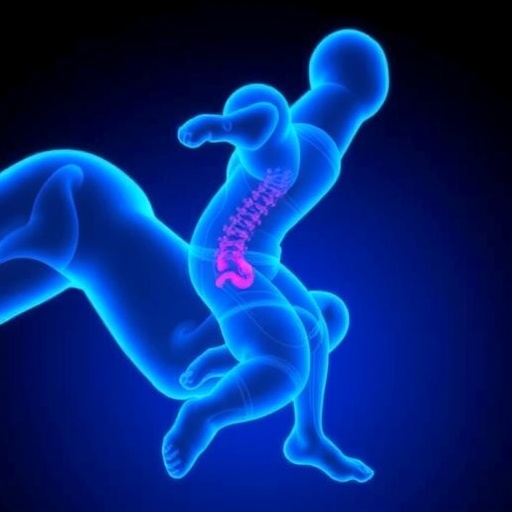A recent breakthrough in the understanding of tendinopathy treatment has emerged from an innovative study published in Current Pharmaceutical Analysis. This study explores the therapeutic potential of Rhizoma Coptidis (RC), a traditional Chinese medicinal herb, applying advanced network pharmacology and molecular docking methodologies to unravel the complex biochemical interactions underlying its efficacy. The research, led by Dr. Haoyu Bian and Dr. Jun Tan, offers compelling insights into how specific active compounds in RC might address the cellular pathologies characteristic of tendinopathy.
Tendinopathy, a prevalent and often debilitating condition marked by the degeneration of tendon tissue, has long challenged clinicians due to its multifactorial etiology and limited effective treatment options. By integrating bioinformatics tools with pharmacological analysis, the researchers identified a total of 154 active ingredients within RC. These were then cross-referenced with differentially expressed genes (DEGs) identified from the GSE26051 dataset, a publicly available transcriptomic database focusing on tendon pathology, which yielded 45 key genes potentially involved in the therapeutic mechanism.
Among the genes pinpointed, Cyclin B1 (CCNB1) and Kinesin family member 11 (KIF11) were particularly noteworthy. Both genes are critical regulators of cell cycle progression and mitotic spindle dynamics, respectively, processes known to be disrupted in tendinopathic tissue. Computational docking studies revealed that two principal phytochemicals present in RC—Berberine and Tetrandrine—exhibited strong binding affinities to the protein products of CCNB1 and KIF11. This suggests a plausible molecular basis wherein these compounds may restore or modulate aberrant cellular proliferation and repair pathways.
The methodological framework combined network pharmacology, which maps interaction networks between compounds and biological targets, with in silico molecular docking and dynamics simulations. These sophisticated approaches allowed the team to not only predict key interactions but also evaluate the stability and specificity of compound-target binding over time. Molecular dynamics simulations provided dynamic insights into the protein-ligand complexes, affirming the potential of the identified phytochemicals to maintain stable engagement with CCNB1 and KIF11 under physiological conditions.
Crucially, the study extended beyond molecular interactions by devising a novel diagnostic model incorporating the expression profiles of CCNB1 and KIF11. This model demonstrated outstanding predictive capability for tendinopathy, with an area under the curve (AUC) value of 0.802, indicating high diagnostic accuracy. Such a tool could significantly improve the early detection and personalized management of tendinopathy, streamlining therapeutic interventions aimed at these targets.
Delving deeper into their findings, the researchers postulate that modulation of the cell cycle via CCNB1 and the regulation of mitotic machinery through KIF11 could be pivotal in reversing the pathological remodeling observed in tendinopathic tendons. Tendon degeneration involves imbalanced cell turnover, extracellular matrix disorganization, and inflammatory cascades, all potentially amenable to intervention through targeted modulation of these pathways.
The identification of Berberine and Tetrandrine as key active constituents underlines the value of RC’s complex phytochemical makeup. Berberine, an isoquinoline alkaloid, is renowned for its anti-inflammatory and cell regulatory properties, while Tetrandrine, a bis-benzylisoquinoline alkaloid, has demonstrated capabilities in modulating calcium channels and inhibiting fibrosis. Their concurrent action on CCNB1 and KIF11 suggests a multifaceted mechanism by which RC orchestrates tendon healing at a molecular level.
Furthermore, the translational value of this research is underscored by its integrative approach combining traditional Chinese medicine knowledge with cutting-edge pharmacoinformatics. The support from the National Natural Science Foundation of China reflects the growing global recognition of herbal medicine’s potential within modern therapeutic paradigms, particularly when leveraged with precision bioinformatics techniques.
While the study’s computational and theoretical models present a robust foundation, the authors emphasize the necessity for subsequent experimental validation. Planned animal model studies and clinical trials will be essential to confirm the prognostic and therapeutic implications of targeting CCNB1 and KIF11 with RC’s active compounds. Such steps are crucial for clinical translation and may pave the way for the development of novel, herb-derived pharmacotherapies for tendinopathy.
In summary, this publication represents a paradigm shift in tendinopathy research, bridging empirical traditional medicine with molecular precision. It illustrates how multifaceted analyses can uncover novel targets and compounds, fostering new treatment avenues for tendon disorders that currently lack effective interventions. The sophisticated bioinformatics and pharmacological strategies deployed here set a benchmark for future investigations into complex musculoskeletal diseases.
The convergence of molecular docking, network pharmacology, and diagnostic modeling not only advances scientific knowledge but also holds promise for practical clinical utility. If validated in vivo, the RC-derived compounds Berberine and Tetrandrine may become cornerstone agents in managing tendinopathy, reducing its burden on athletic and aging populations worldwide. This marriage of ancient wisdom and modern science highlights an exciting frontier in regenerative medicine and drug discovery.
With its integrative methodology and promising findings, the study paves the way for a new generation of research that could redefine how traditional plant-based remedies are substantiated and incorporated into evidence-based medical practice. This seminal work by Dr. Bian and Dr. Tan exemplifies the power of interdisciplinary approaches to address unmet clinical needs through innovative biomedical science.
Subject of Research: Therapeutic mechanisms of Rhizoma Coptidis in tendinopathy, focusing on the active compounds Berberine and Tetrandrine and their molecular interactions with key genes CCNB1 and KIF11.
Article Title: (Not explicitly provided in the content)
News Publication Date: (Not explicitly provided in the content)
Web References: http://dx.doi.org/10.1016/j.cpan.2025.06.002
References: (Not explicitly provided beyond the DOI)
Image Credits: (No image credits provided)
Keywords: Molecular biology, network pharmacology, molecular docking, tendinopathy, Rhizoma Coptidis, Berberine, Tetrandrine, Cyclin B1 (CCNB1), Kinesin family member 11 (KIF11), cell cycle modulation, traditional Chinese medicine




